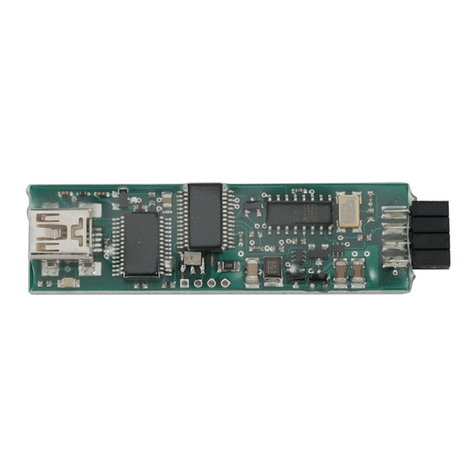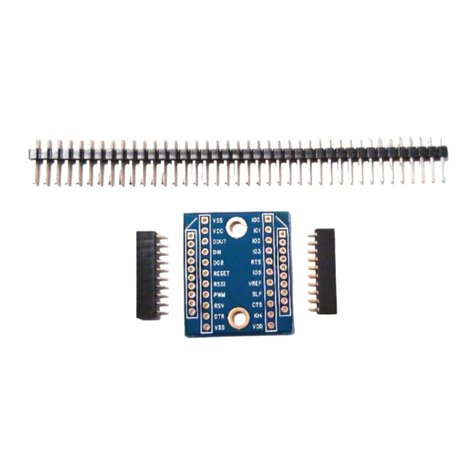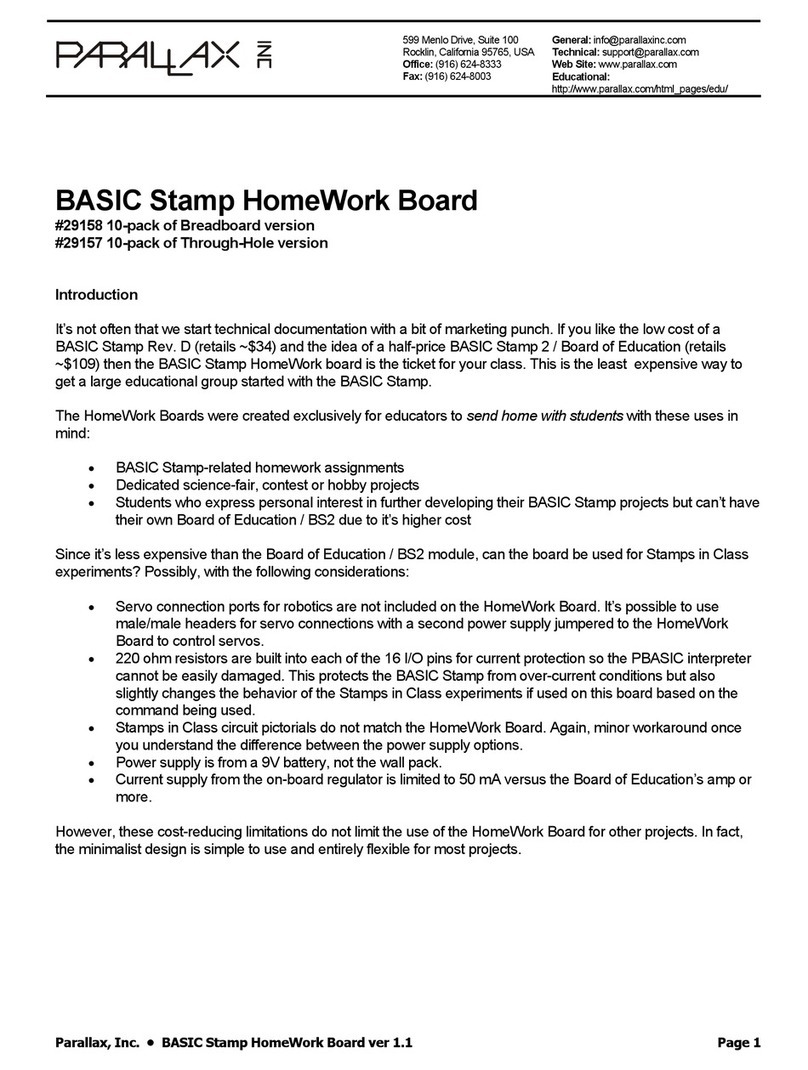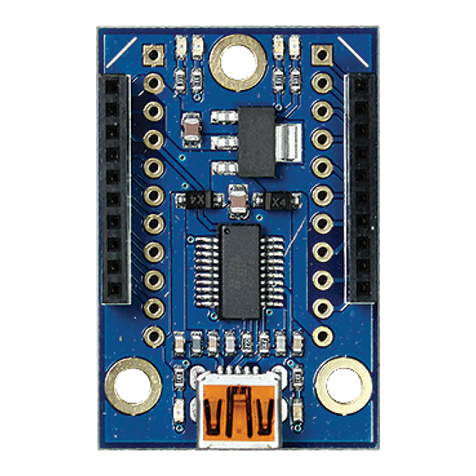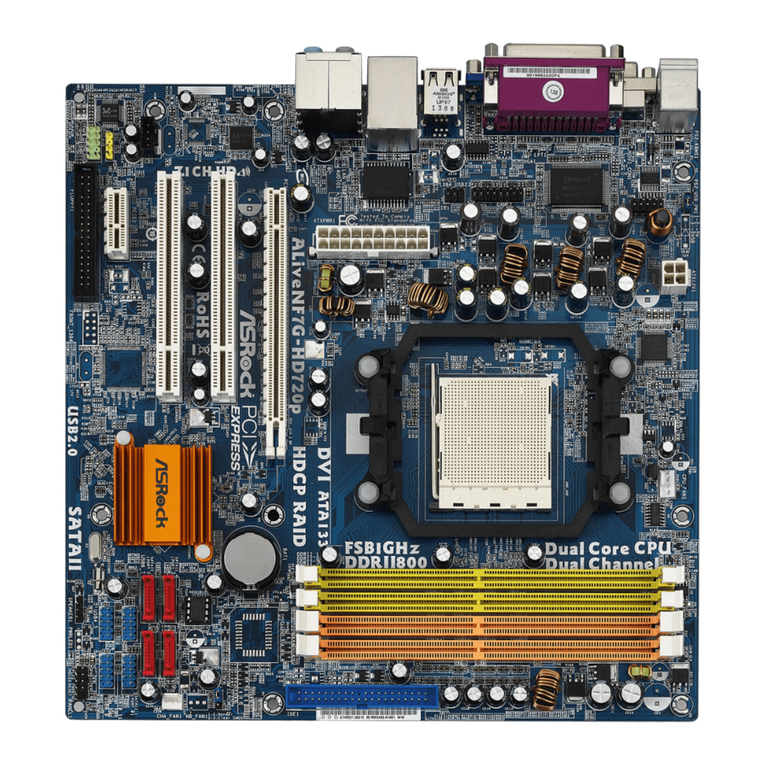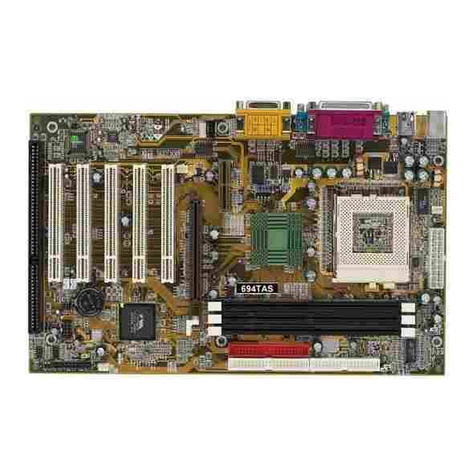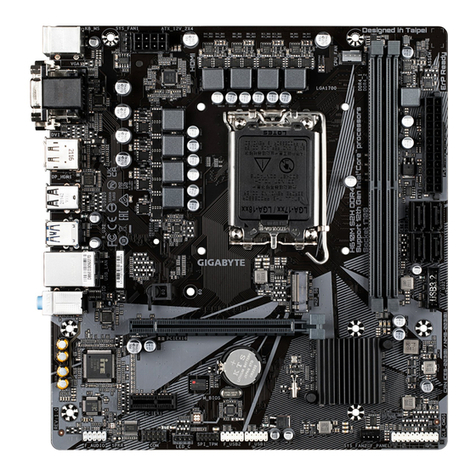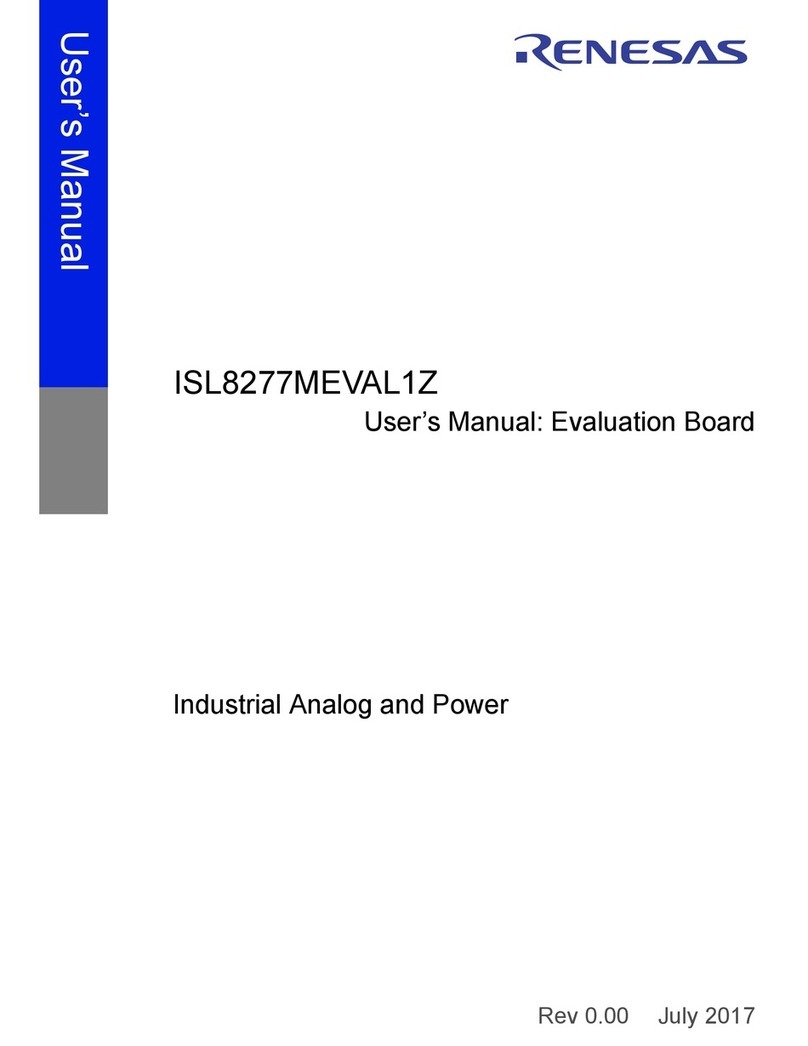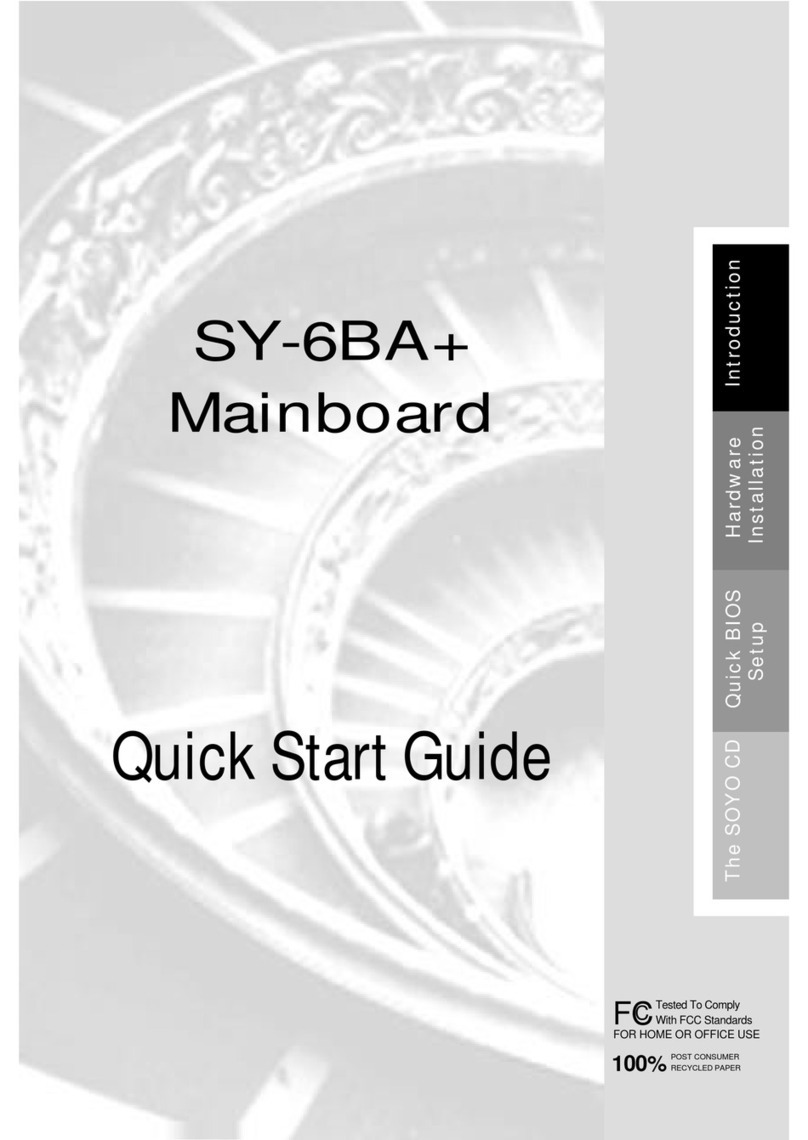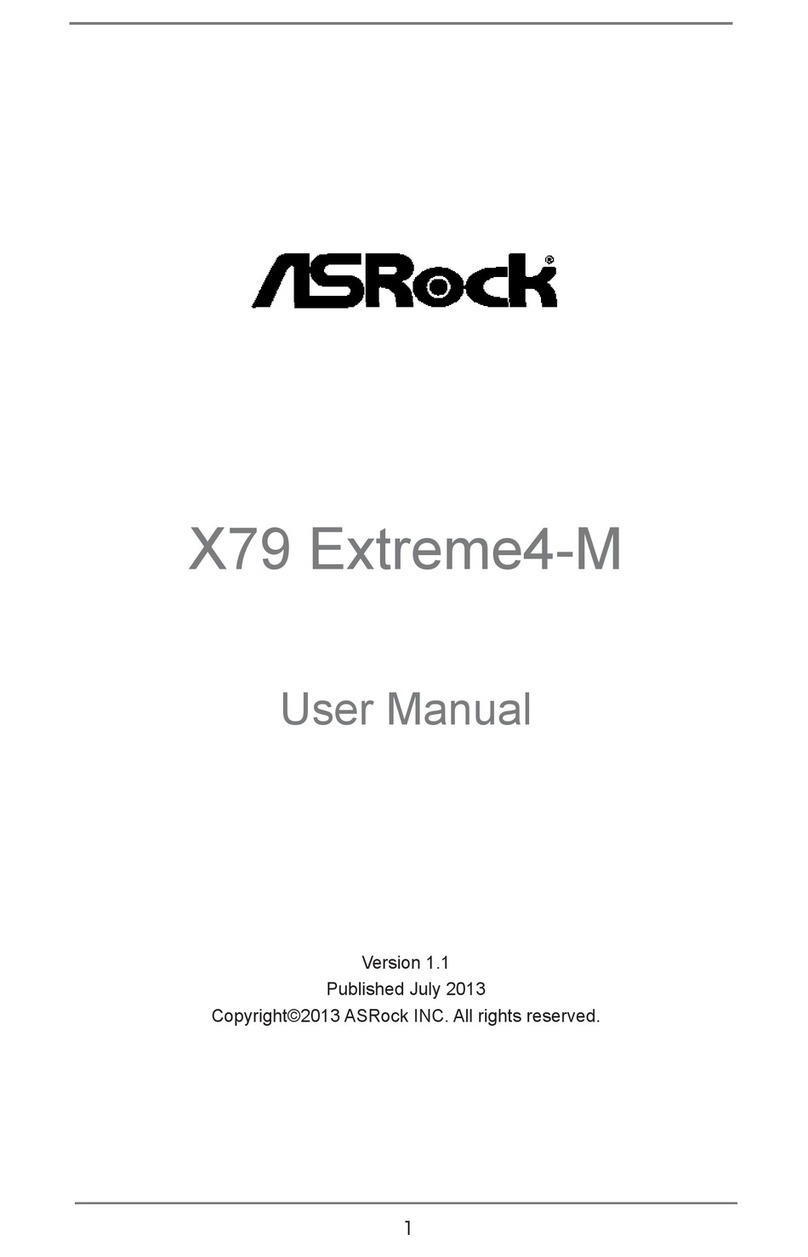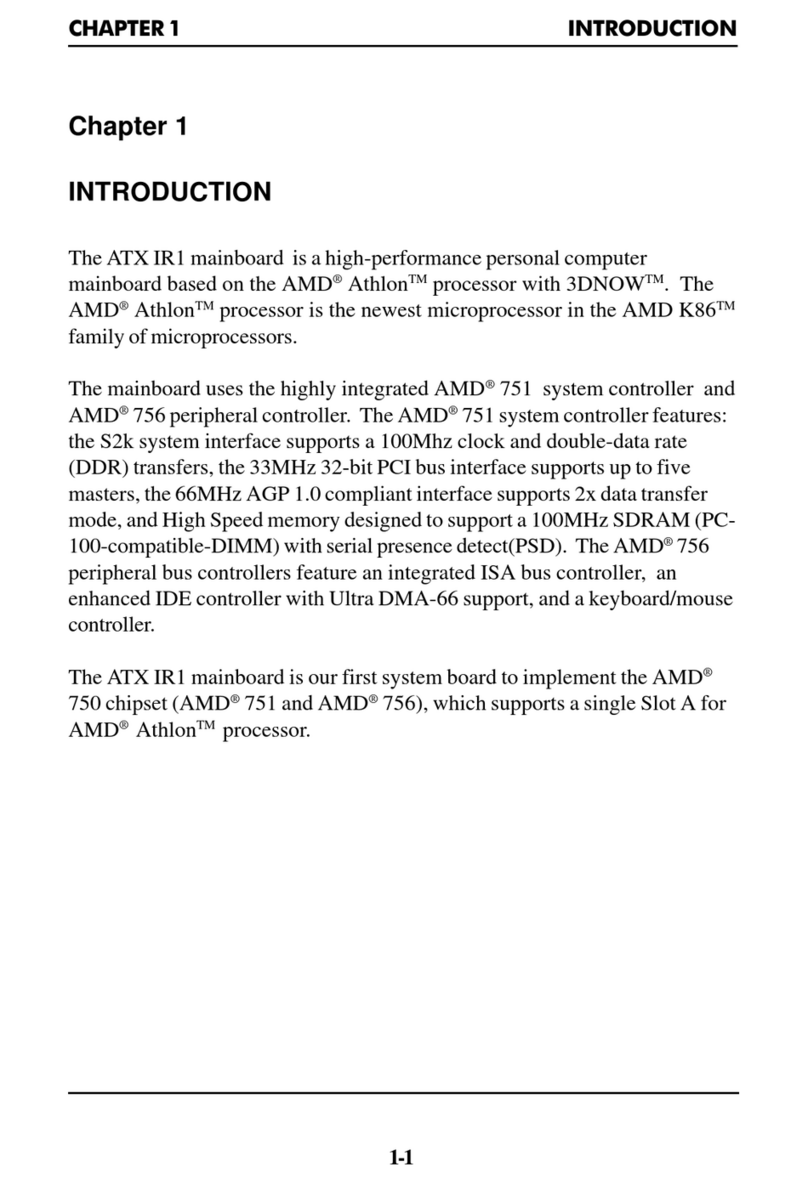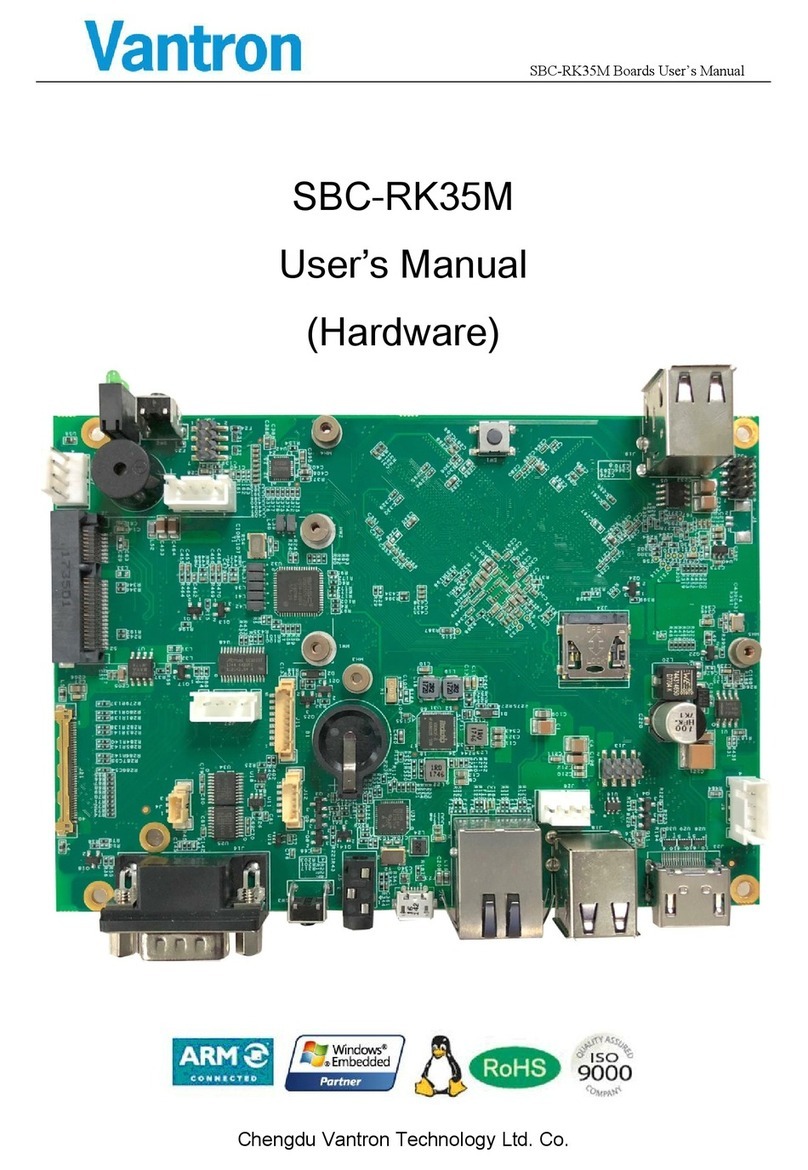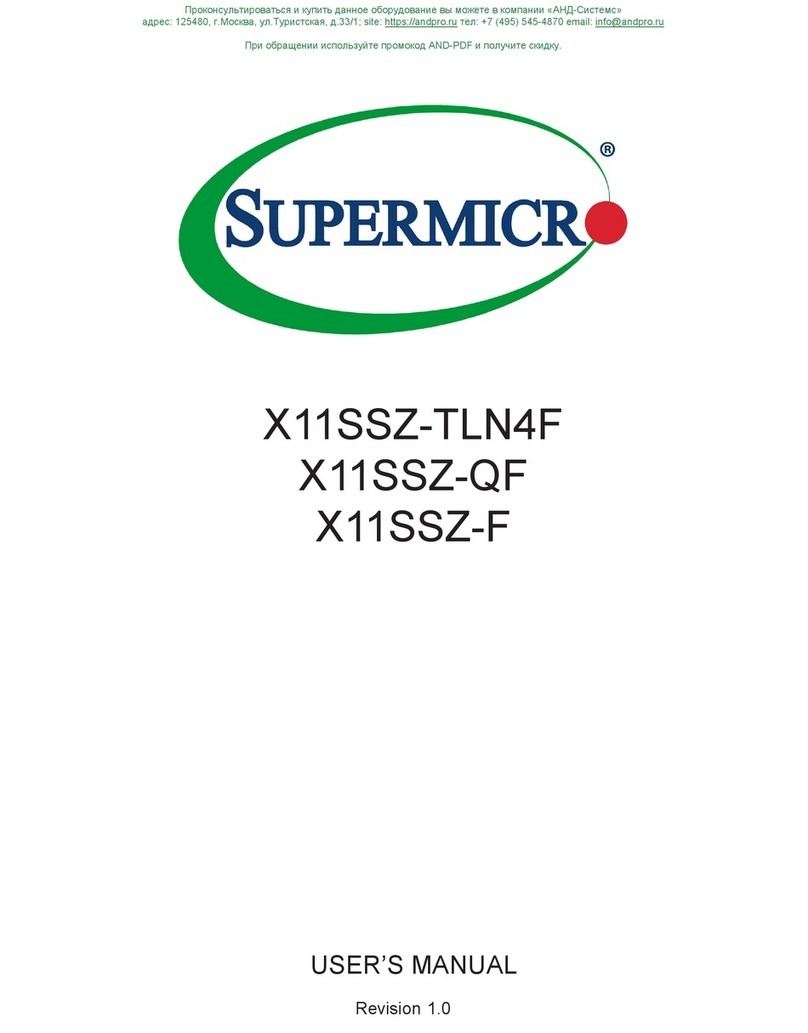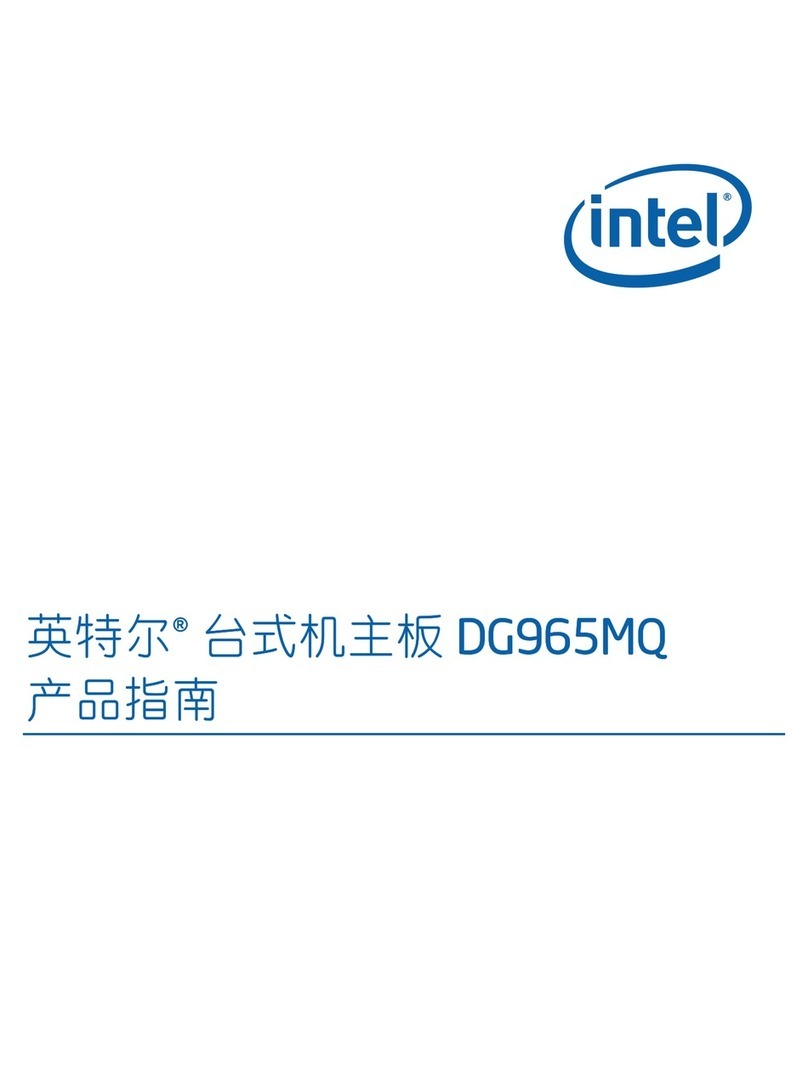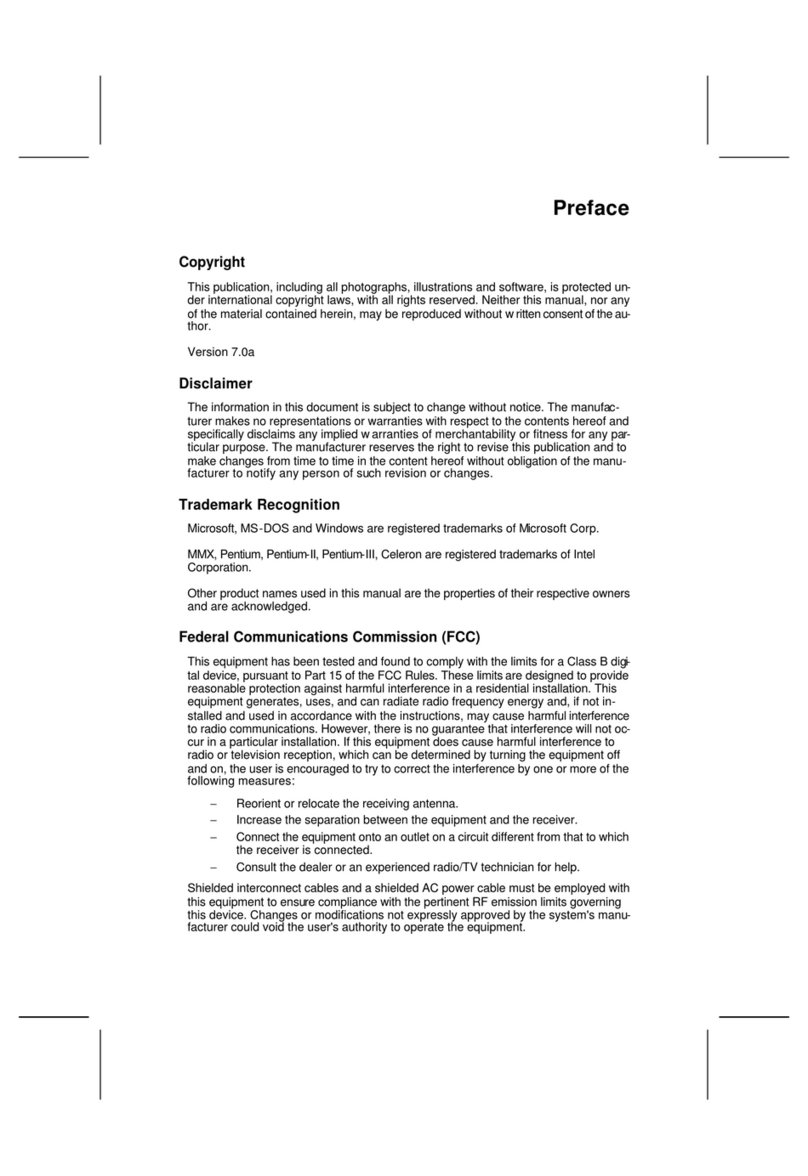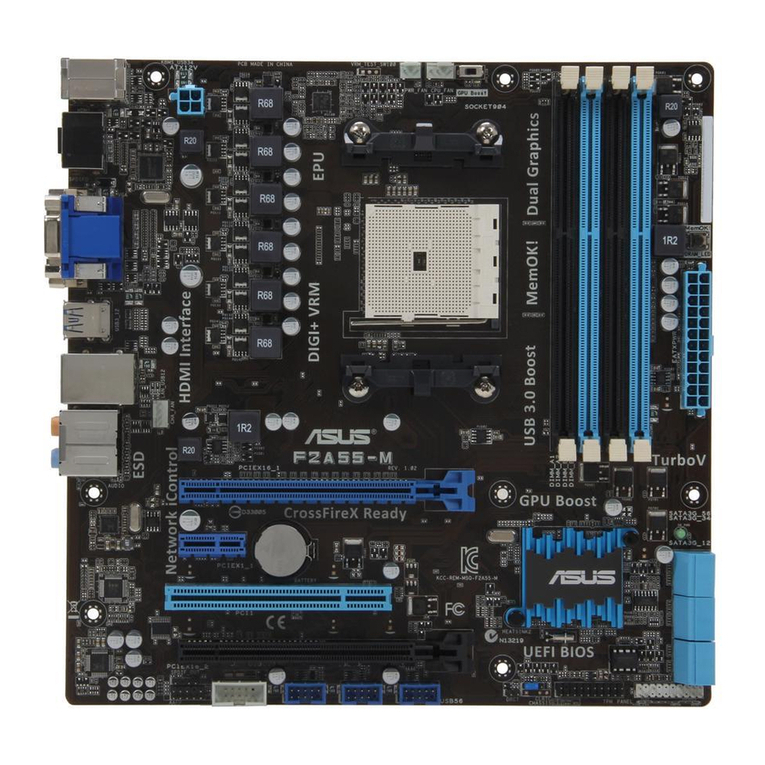Parallax MoBoStamp-pe BS2pe 28300 User manual

Web Site: www.parallax.com
Forums: forums.parallax.com
Sales: [email protected]
Technical: suppo[email protected]
Office: (916) 624-8333
Fax: (916) 624-8003
Sales: (888) 512-1024
Tech Support: (888) 997-8267
© arallax, Inc. • MoBoStamp-pe (2006.09.13) age 1 of 9
MoBoStamp-pe BS2pe Motherboard (#2 300)
General Description
The MoBoStamp-pe provides a compact, professional-grade platform for BASIC Stamp applications. With
the MoBoStamp-pe and the assortment of available daughterboards, ou will be able to integrate and
package one-off or multiple application s stems with ease. The onboard AVR coprocessors permit the
offloading of compute-intensive and background tasks from the BASIC Stamp, ielding a high
performance level, while retaining the BASIC Stamp’s ease of programming. The come preprogrammed
for digital I/O, analog input, pulse-width-modulated output, and frequenc counting. Each coprocessor
interfaces to both the BASIC Stamp and one daughterboard each and ma be reprogrammed b the user.
Potential uses include background serial I/O, floating point processing, and background servo pulsing.
Before using your MoBoStamp-pe, please read and understand this entire document.
Features
• Compact size: designed to fit available packaging.
• BS2pe BASIC Stamp chip for high performance with low current consumption.
• 32K x 8 EEPROM for program and data storage.
• Built-in USB interface, capable of powering the entire board.
• Two sockets for plug-compatible daughterboards, enabling the eas integration of sensors and
interface options.
• Two user-programmable Atmel AVR coprocessors, preprogrammed for digital I/O, PWM output,
analog input, and frequenc measurement.
• Multi-mode power sourcing: board can run from USB or external power.
• Multiple Vdd levels: 3.3V and 5V, jumper selectable.
• User-programmable multi-color LED for status indication.
• Programming header for future interface to an SX-KEY. This will allow programming the SX chip
directl .
Application Ideas
• Robotics
• Remote Sensing
• Data Acquisition
• Industrial Control
• Desktop Appliances
What’s Included
1 ea. MoBoStamp-
pe Motherboard, preconfigured with:
4 ea. 3/16” dia. x 5/16” Threaded Standoffs
8 ea. 4-40 x 3/16” Panhead Machine Screws
3 ea. 2mm Jumpers

© arallax, Inc. • MoBoStamp-pe (2006.09.13) age 2 of 9
Interface Connections and Jumpers
USB
Connector
Vdd "On" LED
External
Power Reset
Button
Bicolor
LED
Power Source
Jumper Vdd Select
Jumper
Coprocessor
"B"
Coprocessor
"A"
S Programming
Header
RxD to AVR A1
Jumper
Daughtercard
Socket "A"
Daughtercard
Socket "B"
External Power Connector
The external power connector enables the connection of a filtered, unregulated 6-9VDC power suppl to
power the motherboard. The plug and cable for this connector ma be obtained separatel from DigiKe ,
using the part numbers given under “Specifications” near the end of this document. Power applied here
supplies both the onboard 5V regulator and the Vin connection to Daughterboard Socket “A”.
Vdd “On” LED
This LED comes on when the board’s Vdd is active. When the board is powered externall , this will occur
whenever external power is applied. When the board is powered from the USB port, the LED will come on
once the board has been connected to a USB port and the onboard USB chip enumerated b the PC.
For applications (such as light-sensing) where such a light source is undesirable, or for situations
requiring minimum current draw, there is a “bow-tie” trace on the bottom of the board (under the
external power connector) which can be cut to disable the LED.
USB Connector
The USB connector is the mini-B t pe. Compatible “A-to-mini-B” cables ma be obtained at most local
computer stores or from Parallax as part number 805-0006.
Power Source Jumper
The power source jumper can be placed to select either external or USB power. When external power is
selected (upper position, marked EXT), the onboard regulator provides 5V to the rest of the board from
Vin. Vin can come from either the external power connector or a daughterboard plugged into
Daughterboard Socket “A”. The USB chip, however, will continue to be powered b the host PC through
the USB cable.

© arallax, Inc. • MoBoStamp-pe (2006.09.13) age 3 of 9
When USB power is selected (lower position, marked USB), the host PC provides 5V to the rest of the
board from the USB cable. Note:
The USB “5V” suppl can range an where from 4V to 5V.
When an
accurate suppl voltage is critical (e.g. for analog applications), it’s best either to use an external suppl
or, if all circuitr can run from 3.3V, to select a Vdd of 3.3V.
Vdd Select Jumper
The Vdd select jumper allows the BASIC Stamp, the EEPROM, and both AVR coprocessors to run from
either 3.3V or 5V. B selecting 5V (lower position, marked V), Vdd is provided b the power source
jumper, without further regulation.
B selecting 3.3V (upper position, marked 3.3V), the onboard 3.3V regulator supplies these chips, as well
as the “Vdd” pin on each daughterboard connector. In this position, the “5V” receptacle on each
daughterboard connector continues to receive 5 volts.
RxD to AVR A1 Jumper
This jumper allows the incoming serial data from the USB interface to be connected to one of the AVR
coprocessor pins. This will permit a properl programmed AVR to receive serial data in the background,
relieving the BASIC Stamp of the task.
SX Programming Header
This six-pin header includes all the signals (plus RST) required to reprogram the SX with something other
than the BS2pe interpreter. This function will be available via an adapter that the Parallax SX Ke plugs
into.
Important: Overwriting the BS2pe firmware is permanent. It is not possible to revert to BASIC
Stamp operation once this has been done.
For normal operation, this header should alwa s be configured with a jumper in the lower right-hand
corner, thus:
Reset Button
The tin reset button, when pressed, will reset the BASIC Stamp chip and both AVR coprocessors. It’s
designed more to be used in conjunction with a paperclip and a pinhole enclosure opening than with a
finger; hence, its diminutive size. During debugging, resetting the board via the debug screen’s DTR
button will likel be easier.
Bicolor LED
This red/green LED is illuminated b pulling BASIC Stamp port P13 low for red or P14 low for green.
Pulling both low simultaneousl will show, at a distance, as amber.
Daughterboard Sockets
The daughterboard sockets receive the speciall -designed daughterboards which, in conjunction with the
onboard AVR coprocessors, perform sensing, interfacing, and other functions. The are labeled “A” and
“B”.

© arallax, Inc. • MoBoStamp-pe (2006.09.13) age 4 of 9
The daughterboards plug in parallel to the motherboard and will t picall have connectors facing the
ends of the motherboard. The daughterboard sockets are identical, with one exception: the “A” socket
carries the Vin signal, while the “B” socket does not. This permits a daughterboard plugged into the “A”
socket to power the whole s stem. That wa , daughterboards can be designed, for example, with 24V-
input DC-DC converters for industrial s stems, or simple wall-transformer inputs for hobb s stems. The
Parallax PWR-I/O-DB card (part #28301) is an example of the latter.
Important: Never insert jumper wires into the daughterboard sockets. Unlike 0.1” header sockets,
these are not big enough to receive most jumper wires without damage.
The “A” daughterboard is sometimes referred to as the “Interface” daughterboard, since it is frequentl
used to interface to the outside world, with its connectors on the same end of the motherboard as the
USB connector. Likewise, the “B” daughterboard is often called the “Sensor” daughterboard, since that’s
the socket where sensors are more likel to be plugged in. In realit , these names are arbitrar , since the
capabilities of the two sockets are virtuall identical.
In addition to the Vin line for socket “A”, each daughterboard socket includes +5V, Vdd, Gnd, and eight
signal lines. It is convenient to think of the signal lines in pairs. Their functions can be described as
follows:
• Common pulled-up pair: These lines connect to both sockets and also to BASIC Stamp ports
P2 and P3. The are pulled up to Vdd via 4.7K pull-ups. The can be used for daughterboard-to-
daughterboard communication, without BASIC Stamp intervention. The can also be used with
open collector drivers as poll inputs to the BASIC Stamp or as actual interrupts to a raw SX
s stem.
• Individual pulled-up pair: These lines connect ports P8 and P9 to socket “A” and P0 and P1 to
socket “B”. The are pulled up to Vdd via 4.7K pull-ups. These ports can be used with the BS2pe
firmware as an I2C interface. Daughterboards with I2C peripherals will use these lines as SDA
and SCL.
• AVR/BASIC Stamp shared pair: Two lines to each daughterboard connect to both the BASIC
Stamp and to the daughterboard’s associated AVR coprocessor. These lines are not pulled up.
Socket “A” receives P11/A2 and P12/A3. (A2 and A3 are pin designators for coprocessor “A”, as
shown below.) Socket “B” receives P7/B2 and P5/B3. A2, A3, B2, and B3, can be programmed as
PWM outputs from the AVR chips.
• AVR exclusive pair: Two lines to each daughterboard connect exclusivel to its AVR
coprocessor. These are A0 and A1 for socket “A” and B0 and B1 for socket “B”. These pins can
be programmed as analog inputs.

© arallax, Inc. • MoBoStamp-pe (2006.09.13) age 5 of 9
The foregoing description is summarized in the following schematic fragment:
Coprocessors
The two AVR coprocessors interface to the daughterboards and to the BASIC Stamp as shown above. P6
and P10 are reserved for BASIC Stamp/AVR communication. These lines are pulled up to Vdd, so that
open-collector comms (e.g. OWIN and OWOUT) ma be utilized. The actual interface details will depend
on the AVR firmware. See the GPIO-3 document for the firmware that comes preinstalled on the
motherboard.
Getting Started
Before connecting our MoBoStamp to a PC, ou should download and install the FTDI drivers necessar
to operate the USB interface. These can be obtained, along with installation instructions, here:
http://www.parallax.com/html_pages/downloads/software/ftdi_drivers.asp
For programming the BASIC Stamp, ou will need the Parallax BASIC Stamp Editor software, available for
download here:
http://www.parallax.com/html_pages/downloads/software/software_basic_stamp.asp
Finall , to use the general-purpose I/O firmware pre-installed in the AVR coprocessors, download the
GPIO user’s guide here:
http://www.parallax.com/detail.asp?product_id=28300
Once these tasks have been completed, make sure our MoBoStamp is jumpered for USB power, and
plug it into our PC. You should hear a “boo-beep” signal from the PC, indicating that the device has
been recognized, and the green Vdd “on” LED should light. You are now read to start programming.

© arallax, Inc. • MoBoStamp-pe (2006.09.13) age 6 of 9
Open the BASIC Stamp Editor, and ke in the following program:
' {$STAMP BS2pe}
' {$PBASIC 2.5}
DO
HIGH 14
LOW 13
PAUSE 500
HIGH 13
LOW 14
PAUSE 500
LOOP
Hit Ctrl-R to load and run the program. You should see the bicolor LED alternatel flash red and green.
You’ve just run our first MoBoStamp program!
AVR Coprocessors
The coprocessors on the MoBoStamp board are Atmel ATTin 13s. The run on an internal 9.6 MHz RC
clock and approach 9 MIPS (million instructions per second), depending on the actual firmware used.
These controllers include 10-bit ADC (analog-to-digital conversion) capabilit , as well as built-in timers for
PWM (pulse-width modulation) output, among other timing functions.
Each coprocessor connects to both the BASIC Stamp and one each of the daughterboards. This permits
the BASIC Stamp’s interaction with a daughterboard to be intermediated b the coprocessor, possibl in
the background, thus relieving the BASIC Stamp from much of the work it would otherwise handle b
itself. In addition, the built-in ADC and PWM functions permit the coprocessors to serve as analog
peripherals for motherboards that require analog interfacing.
Different daughterboards will require, and be provided with, different AVR firmware. This firmware will
come in the form of pre-assembled hex files, which can be uploaded to the coprocessors’ onboard flash
memor . This is done with the AVR Loader program, LoadAVR.exe, available here:
http://www.parallax.com/detail.asp?product_id=28300
To use the loader program, cop it to an folder on our hard drive, and double-click on it to start it up.
You will first be asked to locate the BASIC Stamp Editor program, Stampw.exe. Once ou’ve found and
selected it, the following window will appear:
In step 1, click the “Choose” button to bring up a file dialog. Locate the desired AVR .hex file, and click
“Open”. In step 2, select which coprocessor to load: “A”, “B”, or both. In step 3, just click the button, and
Stampw.exe will be invoked. Once the AVR loader program is uploaded to the BASIC Stamp, a debug
window will pop up showing the AVR programming progress. If ever thing goes oka , the AVR chip(s)
will be programmed with the new code.
Important:
Once the AVR loading process has begun, do not interrupt it: let it run to completion.

© arallax, Inc. • MoBoStamp-pe (2006.09.13) age 7 of 9
In the event that ou install an updated BASIC Stamp Editor after using LoadAVR at least once, ou will
want to make sure that the loader uses the new editor. This can be accomplished in two wa s:
1. Make sure to uninstall the older BASIC Stamp Editor, or
2. Delete the file LoadAVR.ini that appears in the same director as LoadAVR.exe.
Either action will force LoadAVR.exe to request the location of the new editor software the next time it is
run.
It is possible, and even encouraged, for users to write their own firmware for the AVR controller. You can
download a complete development s stem for the AVR processors free of charge from the Atmel website:
http://www.atmel.com/d n/products/tools_card.asp?tool_id=2725
Coprocessor programs written for the ATTin 13, should use the internal 9.6Mhz RC clock. The other fuse
settings configured automaticall b the loader program are:
• Self-programming: Disabled
• Debug wire: Disabled
• Brown-out reset: Enabled, 2.7V
• Serial programming: Enabled
• Preserve EEPROM during chip erase: Enabled
• Watchdog timer alwa s on: Disabled
• Divide clock b 8: Disabled
• Startup time: 4mSec after reset
These settings cannot be changed.
Startup Time
Due to the 4mSec startup time for the AVR coprocessors, a BASIC Stamp program ma well begin before
the AVRs come out of reset. For this reason, ou should alwa s put a
PAUSE 5
at the beginning of each
program that uses one or more coprocessors. This will give the coprocessors time to start before being
accessed.
Serial Data Echo
When the BASIC Stamp starts up, the Editor requires that it echo an characters sent to it b the PC.
Hence, BASIC Stamps are configured in hardware to do just that. But this is not alwa s a desirable thing
during the execution of an application program. Therefore, a provision has been made to disable the
echo. Port P4 is reserved for this purpose and, when pulled low (e.g.
LOW 4
), will disable the echo from
RxD to TxD.

© arallax, Inc. • MoBoStamp-pe (2006.09.13) age 8 of 9
Port Summary
Port
Description and Typical Use Daughterboard
4.7K
pullup?
P0 General-purpose pin or SDA. B Yes
P1 General-purpose pin or SCL. B Yes
P2 General-purpose pin or poll input. A & B Yes
P3 General-purpose pin or poll input. A & B Yes
P4 Receive data echo enable. Pull low to disable echo. (none) Yes
P5 General-purpose I/O. Shared with AVR “B”, port B3. B No
P6 Communication port for coprocessor “B”. (none) Yes
P7 General-purpose I/O. Shared with AVR “B”, port B2. B No
P8 General-purpose pin or SDA. A Yes
P9 General-purpose pin or SCL. A Yes
P10 Communication port for coprocessor “A”. (none) Yes
P11 General-purpose I/O. Shared with AVR “A”, port A2. A No
P12 General-purpose I/O. Shared with AVR “A”, port A3. A No
P13 Red LED. Pull low to turn on. (none) No
P14 Green LED. Pull low to turn on. (none) No
P15 Reserved for AVR programming. DO NOT USE! (none) No
Specifications
Circuit Board Size 2.75” x 1.35”
Nominal Daughterboard Size 1.35” x 1.35”
External Suppl (optional) 6 – 9 VDC, 18mA minimum (3.3V, power LED disabled,
no daughterboards)
USB Suppl (from PC) 4 – 5 VDC
BASIC Stamp Clock 8MHz
Coprocessor Clocks 9.6MHz
USB Connector Mini-B
Daughterboard Connectors (2mm) Mating Header: Hirose DF11-12DP-2DSA(24)
External Power Connector (2mm)
Mating Receptacle:
Shell: Hirose DF3-2EP-2C (DigiKe H4035-ND)
Black Wire: DigiKe H2BXT-10112-B4-ND
Red Wire: DigiKe H2BXT-10112-R4-ND
Sample Programs
Sample programs, written for various daughterboards, are available from the Parallax website:
http://www.parallax.com/detail.asp?product_id=28300

© arallax, Inc. • MoBoStamp-pe (2006.09.13) age 9 of 9
Schematic
Table of contents
Other Parallax Motherboard manuals
